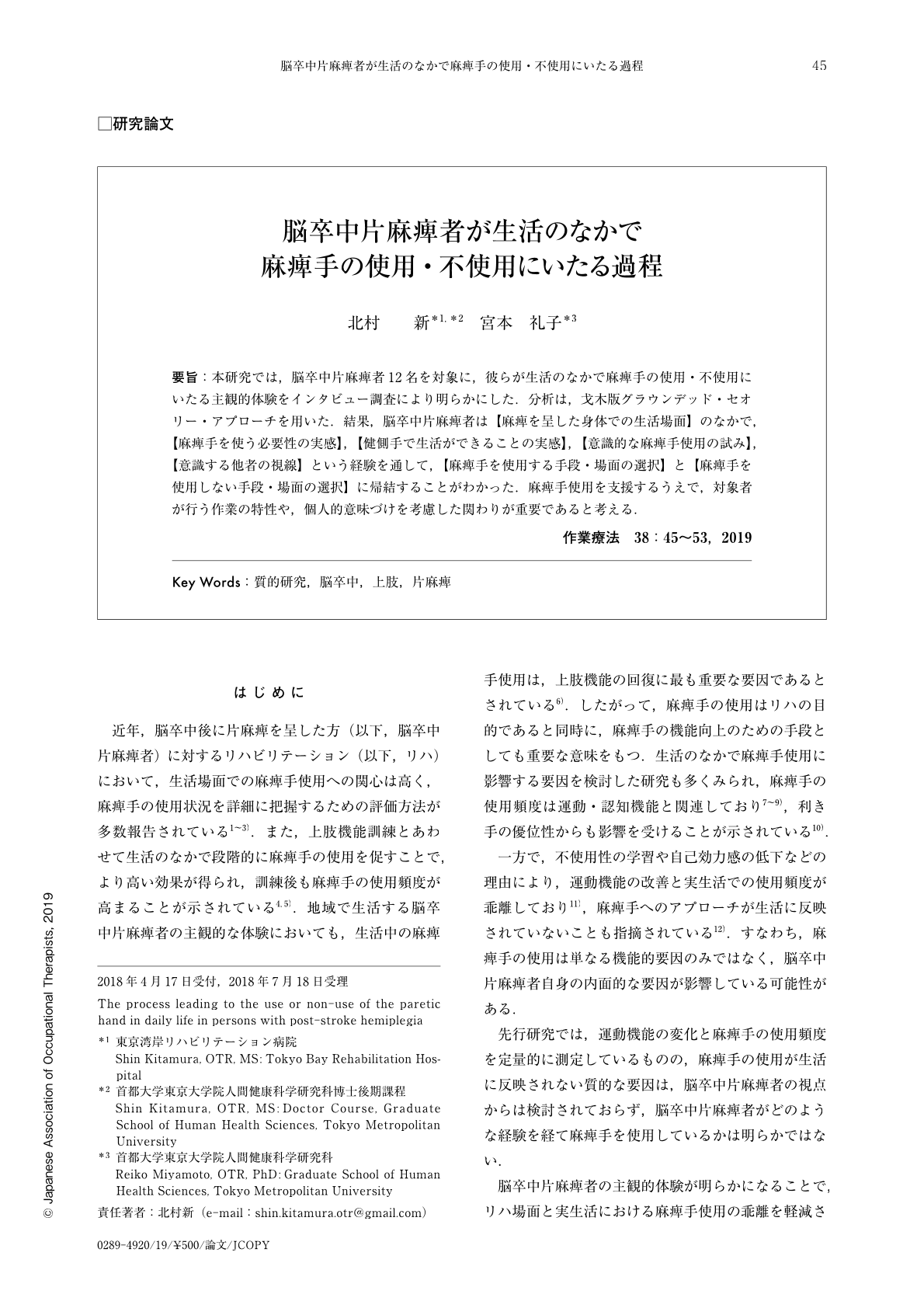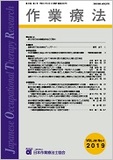Japanese
English
- 販売していません
- Abstract 文献概要
- 1ページ目 Look Inside
- 参考文献 Reference
- サイト内被引用 Cited by
要旨:本研究では,脳卒中片麻痺者12名を対象に,彼らが生活のなかで麻痺手の使用・不使用にいたる主観的体験をインタビュー調査により明らかにした.分析は,戈木版グラウンデッド・セオリー・アプローチを用いた.結果,脳卒中片麻痺者は【麻痺を呈した身体での生活場面】のなかで,【麻痺手を使う必要性の実感】,【健側手で生活ができることの実感】,【意識的な麻痺手使用の試み】,【意識する他者の視線】という経験を通して,【麻痺手を使用する手段・場面の選択】と【麻痺手を使用しない手段・場面の選択】に帰結することがわかった.麻痺手使用を支援するうえで,対象者が行う作業の特性や,個人的意味づけを考慮した関わりが重要であると考える.
We examined subjective experiences using the paretic hand among stroke patients. Twelve subjects with some experience using a paretic hand in their daily living were interviewed, and the interview data were analyzed using Saiki's grounded theory approach. We found that stroke results in the “selection of scenes and means of using one's paretic hand”, and the “selection of scenes and means of non-use of one's paretic hand”. Subjects describe the experience of “a feeling of necessity to use the paretic hand”, “a sense of being able to live using only the non-paretic hand”, “an attempt to consciously use the paretic hand”, and “conscious of being watched by other persons”, while “living in a paralyzed body”. Our results suggest that when occupational therapists encourage the use of a paretic hand among stroke patients, it is important to consider the personal meaning of using one's paretic hand in relation to the characteristics of the engaged occupation(s).

Copyright © 2019, Japanese Association of Occupational Therapists. All rights reserved.


